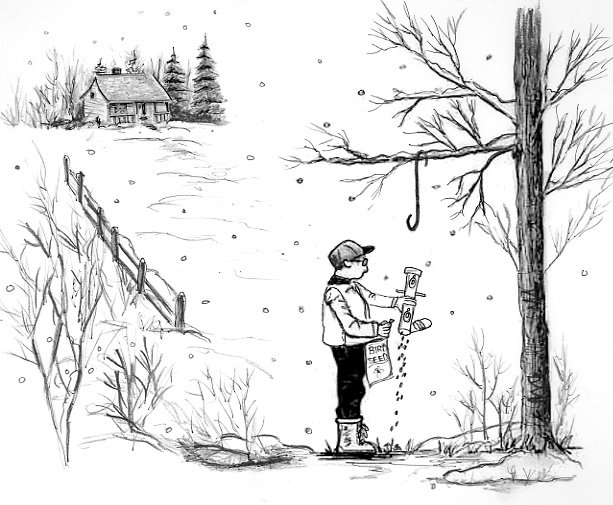
Dear Bird Folks,
I found your book on bird advice in our local library. I enjoyed reading it, but I have a question. On page 88 you advise us to remove all of the old seed from our bird feeders each time we filled them. Then, after we added the new seed, you said to put the old seed back on top. But since most tube-style birdfeeders feed from the bottom, won’t the fresh seed be eaten first, while the old seed, now on the top, not get eaten?
– Irwin, Emmons, NY
Not the library, Irwin,
Why are you going to the library? Stay away from those evil places. I don’t know which disturbed individual came up with the idea of offering books people can read for free, but I can tell you right now it wasn’t a starving author. We need people to buy books, not read them for nothing. Next you’ll be telling me that you get your birdfeeders from the Red Cross and your birdseed from the free clinic. Library? Oh, please.
Of course, you know I’m kidding. I’m flattered that any library would carry my book and I’m super flattered that someone would actually read it. However, I’m not kidding about the importance of keeping your feeder clean and your birdseed fresh. If we are willing to make the effort to invite birds to our yards, then we also need to ensure that the food we offer isn’t spoiled. Don’t make me go all Martha Stewart on you.
After reading your note, Irwin, I started to wonder what I had written on page 88, so I went to my local library to check out a copy of my book (with this economy even I can’t afford my own copy). After rereading page 88 I discovered that you left out a few details. My first suggestion is to completely empty your feeder each time you fill it. Never, ever, top it off. If the old seed looks wet, clumpy and moldy, then dump it into the trash. If the old seed looks okay, then spread it on the ground for the sparrows and doves to eat. The ground-feeding birds like to eat, too, you know.
As an alternative to spreading the old seed on the ground, I also suggest – and I’m not pointing any fingers here – that cheap people can simply rotate their seed. Pour the old seed into a coffee can, add some new seed to the empty feeder and then finish filling it with the seed from the coffee can. Since receiving your question, I’m now suggesting a third idea. Instead of rotating your seed, simply mix it in (if it looks good) with the new seed. That way you won’t have to worry about the old stuff being endlessly moved to the top. Good thinking, Irwin. I owe you a quarter.
What can be gained from remixing or rotating seed? I mean, who needs the extra work? For one thing, rotating allows you to inspect the old seed to make sure it is still good. Also, most feeders aren’t designed very well and they are often produced in a particular foreign country that can’t figure out how to make safe baby formula and pet food, so you know their birdfeeders are going to be sketchy. But even the locally made feeders aren’t perfect. Too often, because of design flaws, pockets of seed get trapped at the bottom of the feeder where the birds can’t reach them. If trapped seed isn’t cleaned out regularly it will rot and you know what one rotten seed will do to the whole bushel, or whatever that expression is.
Weather also creates problems for feeders. Just last week I was filling my own feeder and discovered a problem that’s common in the winter. Hearing my own nagging advice in my head, I tried to dump out the old seed but it wouldn’t come out. It was frozen solid from all the rain/ice we had had that week. I brought the feeder into the kitchen, set it on the counter and decided to warm it up with a hair dryer. (Yet, another one of my ideas that seemed like a good idea at the time.) The hair dryer warmed up the birdseed all right, but it also blew it all over the kitchen counter, with most of it landing in my wife’s morning bowl of granola. Fortunately, she had just stepped out of the room and didn’t see what happened. What she doesn’t know won’t hurt her, right?
The point of the above domestic drama is that if I had simply topped-off the feeder instead of emptying it, the frozen seed would have blocked the new seed from flowing to the holes and the birds would have gone hungry. Another problem is that the seed companies allow a certain percentage of debris (twigs, shells, clumsy farmers’ fingers, etc.) in their bags of seed. Of course the birds won’t eat this debris and thus it slowly filters its way to the bottom, where it can also clog-up the holes.
I definitely recommend that you totally empty your feeders each time you fill them, Irwin. The cheap people should remix or rotate their seeds, but it’s best if you spread the old seed on the ground for the sparrows. You could also sprinkle the old seed into your wife’s granola. I’ll never tell.